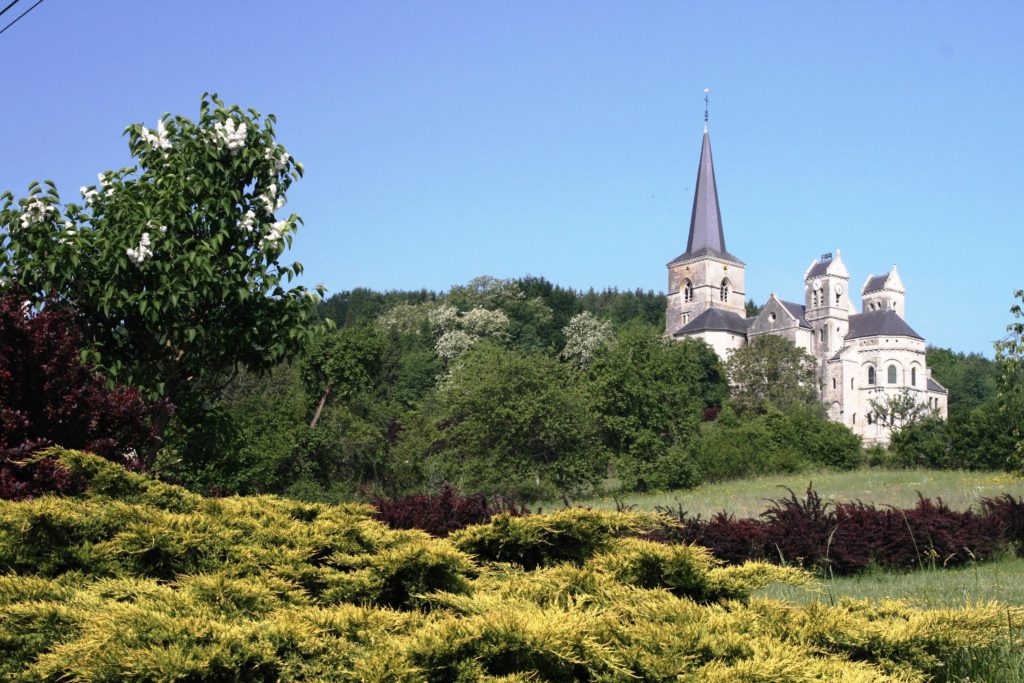Part 1: What’s in a Town?
This look at towns began with one of the Webmaster’s first tour clients; who as a town planner was interested in their water sources, including the historical lavoir or wash house. Starting from there, the Webmaster began to see other common features too. Regardless of size, almost every French town in the sector has the following items:
- Mairie (Town Hall)–If the town is large enough it is usually a combined Mairie/École.)
- War Memorial
- Church
- Salle de Fête (Party Hall)–Regardless of the size of the village
- Lavoir (Wash House)–Even though household washers and dryers have eliminated the need for this building
- Crucifix–Often situated on the outskirts of town
However, as towns have lost population (See Part 3 below.) they are also losing some of the “traditional” services and businesses. The webmaster has been traveling to the Meuse-Argonne Region of France since 1990, and he has noticed a steady decline in the number of towns that still have:
- a boulangerie (bakery)
- boucherie (butchershop)
- tabak (literally tobacco shop)
- Maison de la Presse (newsstand).
- One more thing that has vanished from most towns: The France Telecom phone booth–Rest in Peace.

Lavoir in Halles-sous-les-Cotes, liberated by the 90th Division, AEF in November, 1918. Photo by Alain Cesarini.
Part 2: A Difference Between Rural France and Rural America
In France, most farm buildings are located in, or immediately on the outskirts of towns; and the farmers drive out of town to their surrounding fields. There are relatively few stand-alone farms like the ones that dot the U.S. countryside. For this reason, rural towns in France tend to be just a few kilometers apart. The Webmaster assumes that this development has its historical roots over the centuries in citizens choosing to band together for protection from robbers, etc. If there is another explanation / theory, he would like to hear it.
In contrast, in the U.S. most farms, buildings and land, were historically situated outside of towns; and the farmers went into towns to buy needed supplies. Much of this has developed from legislation such as the 1862 Homestead Act; where individuals / families could get 160 acres of surveyed land after five years of continuous residence on the land. Thus, in rural America towns are generally 8 – 10 miles apart; which represented a day’s walk, plus or minus.

12th Century Church at Mont-devant-Sassey, liberated by the 90th Division, AEF in November, 1918. Photo by Alain Cesarini.
Part 3: Population Trends
Curious about the war’s impact on the region’s population, the Webmaster looked at the population of various towns in the area at various years using information obtained at fr.wikipedia.org. The absolute numbers and the % changes can be seen in the .pdf file below:
The numbers were largely in line with expectations:
- The average population decline from 1901 – 1921 was -37%; likely due both to solders’ deaths and families not choosing to return.
- The average population increase 1921 – 1931 was +17%; so not everyone returned post-WW1.
- The average population decline from 1851 – 2009 was -63%; reflecting industrialization, etc.
But there were a few surprises:
- The average population decline from 1851 – 1901 was -25%. Was this also due to industrialization, the Franco-Prussian War (1870-71) and the German gains of Alsace and Lorraine, or something else?
- The population of Romagne-sous-Montfaucon actually grew from 1901-1921. Was this due to the American Cemetery as an employer or another factor?
- There was quite a wide range of population change in the 1901-1921 period. Apremont, as the extreme example, lost 71% of its population.
Just a few random thoughts to think about on the next battlefield trip.
